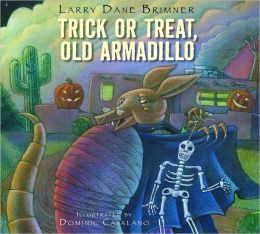Dear Readers…
DearEditor.com’s Revision Week kicks off with Larry Dane Brimner, the award-winning author of more than 150 books for readers of all ages. His nonfiction books for children and young adults include Birmingham Sunday, an Orbis Pictus Honor Book for Outstanding Nonfiction for Children, and We Are One: The Story of Bayard Rustin, a Norman A. Sugarman Children’s Biography Award winner.
Please join Larry and The Editor for Day 1 of Revision Week, and find out how to win today’s “Free Partial Edit” from The Editor.
 Larry Dane Brimner began to focus on writing for young people during his twenty-year teaching career. His books have garnered awards and the praise of reviewers, teachers, and readers. The Editor is privileged to talk researching, writing, and revising with Larry over tacos every few months and is thrilled to be able to share his revision process with DearEditor.com readers.
Larry Dane Brimner began to focus on writing for young people during his twenty-year teaching career. His books have garnered awards and the praise of reviewers, teachers, and readers. The Editor is privileged to talk researching, writing, and revising with Larry over tacos every few months and is thrilled to be able to share his revision process with DearEditor.com readers.
*After Larry’s interview are instructions for entering today’s Free Partial Edit Giveaway.
When you write a picture book, how many drafts does it typically take before you feel confident about the character and story choices you made?
I’ve found that the number of drafts it takes to get any manuscript “right” is directly related to the amount of time I’ve spent thinking about a project before I stand in front of my computer station to compose. On one occasion, it took me one draft, or about 45 minutes, to write an early reader; such an experience hasn’t duplicated itself. Looking back over my manuscripts, I’d say it usually takes at least a dozen drafts and, often, as many as thirty. These aren’t full revisions, however, since I always begin a writing session—whether writing a picture book, a chapter book, or nonfiction—by reading the manuscript aloud from the top. As I go along, I tweak words and phrases, I eliminate sentences or passages that don’t seem to work after sleeping on the story for a night, I add words and passages that I think are missing. I number and save each writing session/draft at the end of the day so if I need to retrieve something I’ll still have it. This “process” isn’t the one writing teachers typically teach; that is, I don’t rush to get words on the page so I’ll have a draft to revise. I plod. There’s no other way to describe it because some days I only get a sentence or two written. And I revise as I go, knowing full well that there will come a time when the entire finished manuscript—“finished” in my eyes, at least—will come under the microscope. Perhaps this is the result of a slightly OCD personality that won’t allow me to comfortably move forward until what’s already on the page (or screen) is at least satisfactory for the moment. What it does allow is for me to become familiar with my characters and their quirks; it allows me to “find” the story I think I’m telling.
Which draft typically gets shown to your editor?
My editors see nothing until I’m satisfied that I can’t do anything else with the story being told. Quite honestly, sometimes I’ve been in such a rush to get something out to an editor that I haven’t allowed enough time between that final review and the post office (or send key). Many times I’ll sit down to look at a story a week after it has been sent to an editor, and I think, Oh, cripes! Of course, then it’s too late. So I now force myself to put a project away for at least a week and often longer before sharing it with an editor.  If you’re looking for a number, I can point out that my nonfiction editor didn’t see Birmingham Sunday until the forty-ninth draft/version (and then there were edits and revisions after that—too many to count).
If you’re looking for a number, I can point out that my nonfiction editor didn’t see Birmingham Sunday until the forty-ninth draft/version (and then there were edits and revisions after that—too many to count).
How much revising happens after the editor sees that draft?
I touched on this above. I recall that with my picture book Merry Christmas, Old Armadillo, I wasn’t as specific and detailed as I thought I’d been. My editor asked me what kind of wreath was on the door and what kind of door it was. Details. This was conveyed to me in an editorial letter that was as long as the manuscript itself (or longer). After giving thought to my editor’s suggestions, questions, and comments, I came up with the following: “Roadrunner shook his head and helped Peccary hang her piney wreath on the ancient door.” This conveys everything I thought had been evident but wasn’t. I mean, in my mind, wreaths are always piney but, of course, they’re not, and doors on old adobe casitas are always ancient. With my picture book The Littlest Wolf, that editor (who did not write editorial letters) and I spent three or four marathon sessions on the phone revising line by line. It was truly the most frustrating experience I’ve ever had. (I can say this because the editor is no longer in the business. I like to mull things over, consider options, look at it on the page before I commit to something.) Having been in this business for thirty years, I can say that editors today expect things to come to them in a more or less finished state; many don’t have the time to work with a writer to refine and polish a story. And I understand this, but it sure was nice when an editor would see a glimmer of an idea in a story and work with the author to uncover it. To answer your question, though, I would say that after an editor sees my work, I can look forward to three or four more complete drafts of a text before it is ready for publication. (With nonfiction, it may be more!)
Merry Christmas, Old Armadillo, I wasn’t as specific and detailed as I thought I’d been. My editor asked me what kind of wreath was on the door and what kind of door it was. Details. This was conveyed to me in an editorial letter that was as long as the manuscript itself (or longer). After giving thought to my editor’s suggestions, questions, and comments, I came up with the following: “Roadrunner shook his head and helped Peccary hang her piney wreath on the ancient door.” This conveys everything I thought had been evident but wasn’t. I mean, in my mind, wreaths are always piney but, of course, they’re not, and doors on old adobe casitas are always ancient. With my picture book The Littlest Wolf, that editor (who did not write editorial letters) and I spent three or four marathon sessions on the phone revising line by line. It was truly the most frustrating experience I’ve ever had. (I can say this because the editor is no longer in the business. I like to mull things over, consider options, look at it on the page before I commit to something.) Having been in this business for thirty years, I can say that editors today expect things to come to them in a more or less finished state; many don’t have the time to work with a writer to refine and polish a story. And I understand this, but it sure was nice when an editor would see a glimmer of an idea in a story and work with the author to uncover it. To answer your question, though, I would say that after an editor sees my work, I can look forward to three or four more complete drafts of a text before it is ready for publication. (With nonfiction, it may be more!)
How does your revision process change when you write nonfiction?
Gosh, that’s a good question. I would say that with fiction, I want to make sure the story has been completely told and that I’ve wrapped up all the loose ends. If there was an event in chapter three or four, I want to make sure that if it needs a conclusion that conclusion has been provided. In a picture book, I want to make sure that the single concept I’m addressing in the story is conveyed as simply and with as few words as possible, yet that it is done in an artful way. I tend to write longer nonfiction, so when I revise my nonfiction I want to make sure that factual information has been included about each concept I’ve touched on. Sometimes I can do this with a simple in-line explanation, but other times I feel that a sidebar is more appropriate. In Black & White, for example I made reference to Autherine Lucy and her attempt to integrate the University of Alabama. I knew kids/readers wouldn’t know who she was or how she came to the university, so I expanded on her story in a sidebar. At other times, something doesn’t work in the main text because it would tend to pull a reader away from the story I’m telling and yet, it’s interesting enough (to me, at least) to be included somewhere. So I’ll use a sidebar just to give the reader a bit more information. I did this again in Black & White when I provided a sidebar about the South’s “Declaration of Constitutional Principals,” which has been in the news recently with regard to state’s rights.
In Black & White, for example I made reference to Autherine Lucy and her attempt to integrate the University of Alabama. I knew kids/readers wouldn’t know who she was or how she came to the university, so I expanded on her story in a sidebar. At other times, something doesn’t work in the main text because it would tend to pull a reader away from the story I’m telling and yet, it’s interesting enough (to me, at least) to be included somewhere. So I’ll use a sidebar just to give the reader a bit more information. I did this again in Black & White when I provided a sidebar about the South’s “Declaration of Constitutional Principals,” which has been in the news recently with regard to state’s rights.
Do you use critique partners?
No. I read everything aloud. Over and over and over. Having said that, I sometimes will use an editorial service, but I’ve only done that twice when I’ve been uncertain about a project. (Neither of those projects was ever placed, by the way.) I tend to trust my own judgment and, of course, I work with some amazing editors whose guidance I trust implicitly. One of the reasons I don’t rely on critique partners is because early on in my career when I was focusing on early readers and picture books, I went to one (the only one I could find) and the advice I got was to “use more contractions.” Well, the publishers whose doors I was trying to break down didn’t allow contractions. So that was my last visit to a critique group. I know many successful writers who do use their critique partners to refine their work, but it’s not for me.
Do you ever read your picture book manuscripts (fiction or nonfiction) to kids to test them out?
Never. Kids typically will like almost anything an adult writes simply because they’re happy that someone is spending time with them.
Can you share an experience of having a story problem you didn’t think you could solve but eventually did?
Absolutely. With Trick or Treat, Old Armadillo, I needed to figure out how an established character (established in Merry Christmas, Old Armadillo) could turn the tables on his friends and actually surprise them when he is historically the one surprised. I also needed to do it in a way that would not reveal the surprise too soon because I didn’t want readers/listeners to know the surprise before the story characters. I noodled with this one section—near the end of the story—for two solid months. Finally, one night at two a.m. (which is when I do a lot of thinking) I figured out what the surprise, or trick, would be. Then all I had to do was noodle with the language or telling of the story (another month or so) so kids (and the illustrator) would understand what just happened. I wrote:
Trick or Treat, Old Armadillo, I needed to figure out how an established character (established in Merry Christmas, Old Armadillo) could turn the tables on his friends and actually surprise them when he is historically the one surprised. I also needed to do it in a way that would not reveal the surprise too soon because I didn’t want readers/listeners to know the surprise before the story characters. I noodled with this one section—near the end of the story—for two solid months. Finally, one night at two a.m. (which is when I do a lot of thinking) I figured out what the surprise, or trick, would be. Then all I had to do was noodle with the language or telling of the story (another month or so) so kids (and the illustrator) would understand what just happened. I wrote:
Outside . . . feet scuffed upon flagstones.
Inside . . . Old Armadillo slowly pulled a blanket over his head.
Outside . . . (page turn) A paw pounded thrice against the door.
Inside . . . Old Armadillo shifted and squirmed beneath the blanket.
Outside . . . a chilling voice called, “It is time!”
Inside . . . under the blanket, Old Armadillo grew as still and silent as stone.
So what I’ve accomplished with this passage is to (I hope) put the scare into what is about to happen when the characters outside Old Armadillo’s casita finally enter. I’ve also accomplished Old Armadillo’s change of costume without revealing what he’s doing under the blanket to the reader/listener. Then, after another brief passage to further set the tone/mood of the story and another page turn, Old Armadillo reveals himself when, “Suddenly, Old Armadillo flung the blanket aside,” and his voice thunders out from a jack-o’-lantern, “Quiero Halloween!” It is a very simple passage that took months to settle on and get right.
What’s the most drastic thing you’ve done to a text while revising?
The most drastic thing I’ve ever done is to lose an entire finished manuscript when my disk crashed. (Who knew that thumb drives weren’t forever!) It could not be recovered and all I had were bits and pieces of notes on my computer and a deadline one month away. Literally, after crying for half an hour, I told myself to buck up and start over. It turned out that the new, revised-from-scratch manuscript was much tighter than the original and I delivered it on time. The dumbest thing I’ve ever done was to hear an editor say, “The revision should be easy. It’s just a little thing in the last chapter. Can you have it to me by the end of the month?” I waited until a week before the revision was due to even look at the editorial comments and when I did, it hit me: If you make a little change in the last chapter, it has to be set up in each preceding chapter. I’ve made that mistake only once. This was a chapter book, but it applies to picture books as well: If you make a change to the last scene, chances are good that you’re going to have to set it up in each preceding scene. As I think about it, though, perhaps the most drastic thing I’ve done is to put a text away in my “Stinky Story Drawer” and give up on it.
How do you know you’ve got the final draft?
This is difficult for me to answer because I don’t think I ever really know. But there’s usually a gut feeling or instinct I get that tells me that this is the final draft and I can’t do anything to make it any better. It tells me that this draft is worthy of publication (even when I can’t find an editor who agrees with me). And this brings to mind a note of encouragement. I once had a picture book rejected. The editor sent a letter pointing out all the story’s flaws and wished me better luck next time. I filed that story in my Stinky Story Drawer for two years. Then one day when I was looking for something to revise (rather than start), I pulled that story out, read it, and said to myself. “You know, this is good.” I sent the story to the very same editor with a note that said, “I’ve had two years to consider your comments. Will you look at it again?” This time she called and said, “The changes you made are brilliant. It sparkles now. I want to offer a contract.” Of course, I’d made no changes; I didn’t even print out a fresh copy. So there is always hope for a story, even one that has been rejected and landed in the Stinky Story Drawer.
TODAY’S GIVEAWAY:
The Editor is celebrating Revision Week by giving away a FREE PARTIAL EDIT of your manuscript. Note that the winner of today’s giveaway IS eligible for Saturday’s grand prize Full Manuscript Edit Giveaway. Here are the rules:
- Your manuscript can be of ANY GENRE or CATEGORY (for adults or children, fiction or non-fiction), including picture books.
- The partial edit will cover the FIRST TEN PAGES of your manuscript. In the case of a picture book entry, the edit will cover the entire manuscript—but the manuscript cannot exceed 7 double-spaced, 12-pt font pages.
- Deadline: MIDNIGHT tonight, March 25, 2013, PST.
- Winner will be randomly selected using Randomizer.org and announced on March 26, 2013, in the DearEditor.com comments section and on the DearEditor.com Facebook page, and the winner will be notified directly via email.
TO ENTER:
One entry – SEND EMAIL to DearEditor.com using the “Write to The Editor” button at the top of the blog or by clicking here. Type “Free Picture Book Edit Giveaway” in the subject line. In the body of the email, include the TITLE of your manuscript and YOUR FULL NAME. DO NOT send your manuscript or any portion of it. (If you have any difficulty with the contact button, send an email entry directly to dear-editor@hotmail.com.) *If you do not want your title announced, please use an alternate working title.*
Bonus entry – SUBSCRIBE. DearEditor.com subscribers get a bonus entry by sending a second email with “Subscriber’s Bonus Giveaway Entry” in the subject line and your title and full name in the body. (Note: the Editor will verify!) Not a subscriber yet? Then subscribe now by clicking on the “Subscribe” button at the top of DearEditor.com and then email your second entry.
Extra bonus entries – SPREAD THE WORD. Blog, tweet, or otherwise electronically tell others about this giveaway to get additional entries. Send an email to DearEditor.com with “I Spread the Word!” in the subject line, and in the body include a link to your blog post or your Twitter address or your Facebook wall or whatever social media you used to spread the word. Don’t send screen-shots; attachments won’t be accepted. Include your title and full name in the body. Spread the word more than once? Then send an “I Spread the Word!” email for each one!
Anyone who doesn’t follow these rules will be disqualified, at the Editor’s discretion.
Disclaimer: The Editor does not share or in any other way use your contact information; it’s collected solely for winner contact purposes at the end of the giveaway.
Good luck!